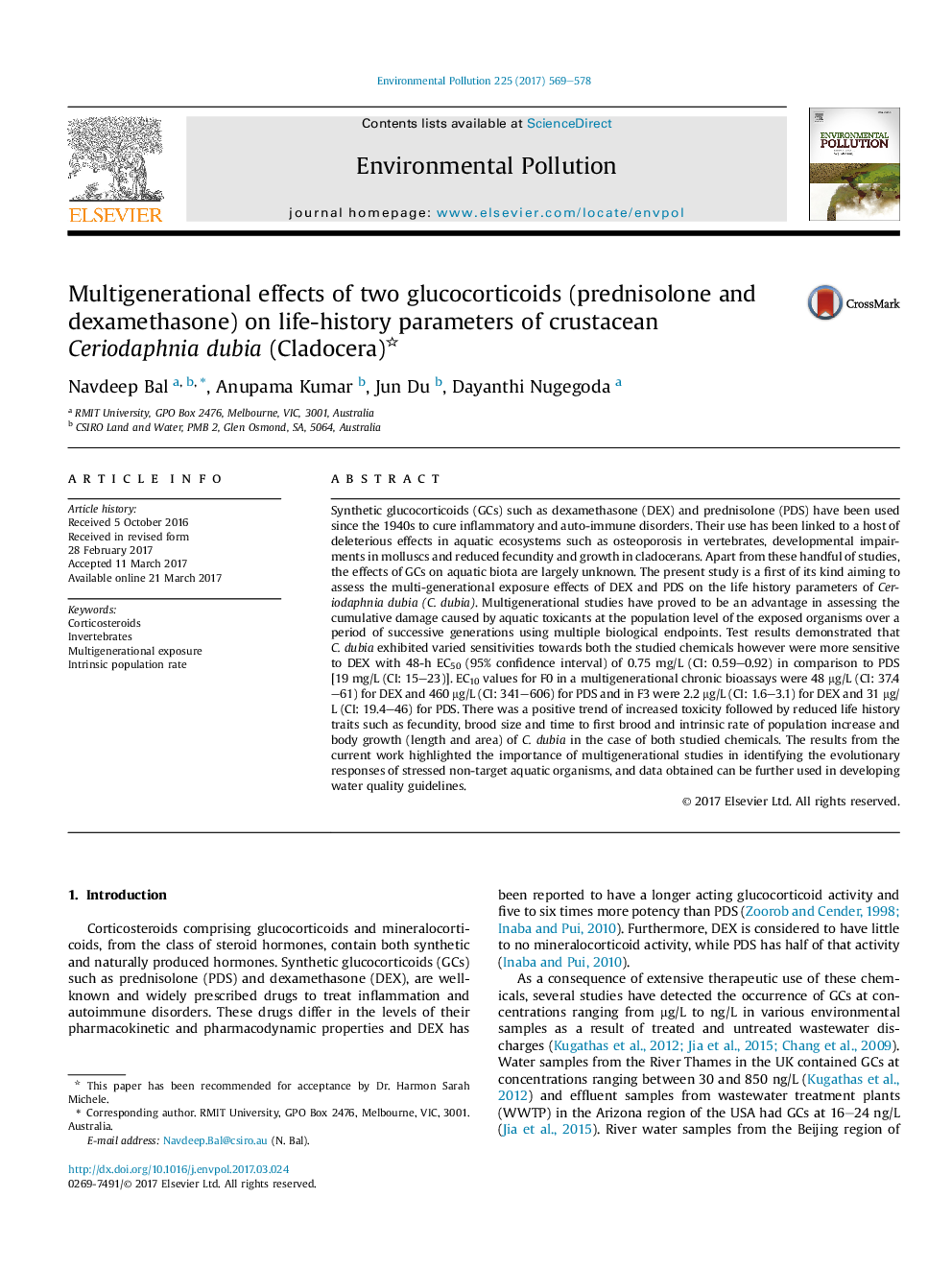| کد مقاله | کد نشریه | سال انتشار | مقاله انگلیسی | نسخه تمام متن |
|---|---|---|---|---|
| 5748966 | 1619148 | 2017 | 10 صفحه PDF | دانلود رایگان |

- GC-induced toxicity affects life-history traits of C. dubia at their population level.
- Significance of multigenerational bioassays to detect responses of stressed species.
- C. dubia were more sensitive to DEX than PDS in all exposed generations.
- Increased toxicity effects in F3 generation than F0 in both test chemicals.
Synthetic glucocorticoids (GCs) such as dexamethasone (DEX) and prednisolone (PDS) have been used since the 1940s to cure inflammatory and auto-immune disorders. Their use has been linked to a host of deleterious effects in aquatic ecosystems such as osteoporosis in vertebrates, developmental impairments in molluscs and reduced fecundity and growth in cladocerans. Apart from these handful of studies, the effects of GCs on aquatic biota are largely unknown. The present study is a first of its kind aiming to assess the multi-generational exposure effects of DEX and PDS on the life history parameters of Ceriodaphnia dubia (C. dubia). Multigenerational studies have proved to be an advantage in assessing the cumulative damage caused by aquatic toxicants at the population level of the exposed organisms over a period of successive generations using multiple biological endpoints. Test results demonstrated that C. dubia exhibited varied sensitivities towards both the studied chemicals however were more sensitive to DEX with 48-h EC50 (95% confidence interval) of 0.75 mg/L (CI: 0.59-0.92) in comparison to PDS [19 mg/L (CI: 15-23)]. EC10 values for F0 in a multigenerational chronic bioassays were 48 μg/L (CI: 37.4-61) for DEX and 460 μg/L (CI: 341-606) for PDS and in F3 were 2.2 μg/L (CI: 1.6-3.1) for DEX and 31 μg/L (CI: 19.4-46) for PDS. There was a positive trend of increased toxicity followed by reduced life history traits such as fecundity, brood size and time to first brood and intrinsic rate of population increase and body growth (length and area) of C. dubia in the case of both studied chemicals. The results from the current work highlighted the importance of multigenerational studies in identifying the evolutionary responses of stressed non-target aquatic organisms, and data obtained can be further used in developing water quality guidelines.
341
Journal: Environmental Pollution - Volume 225, June 2017, Pages 569-578